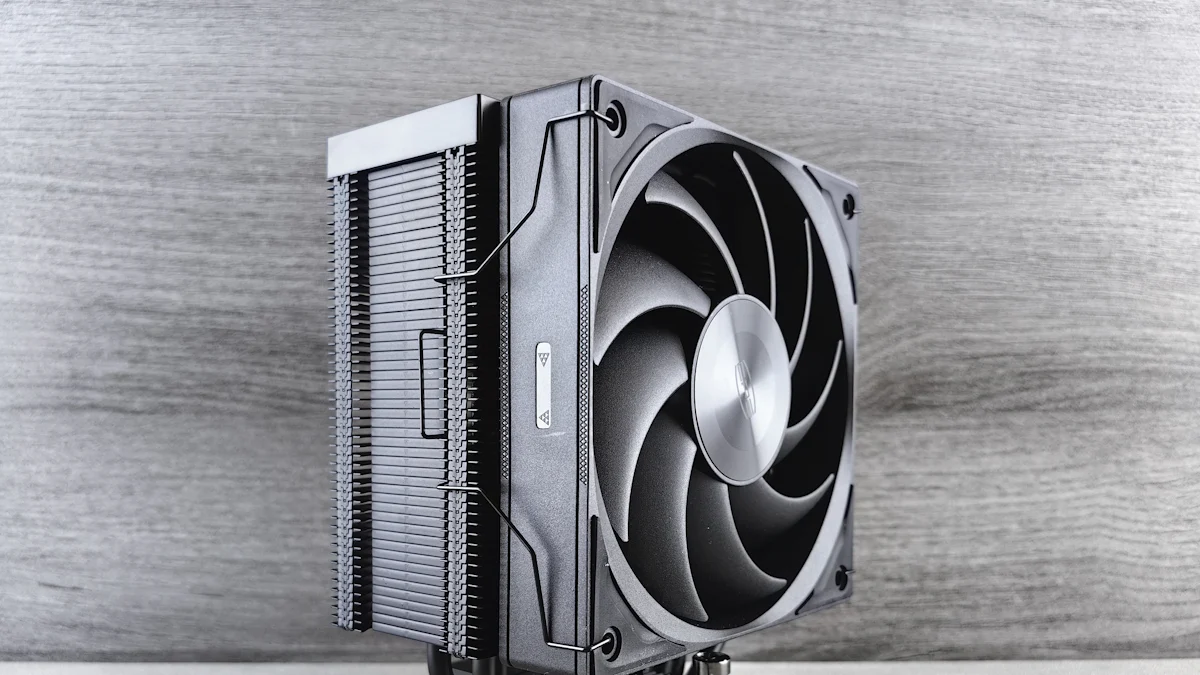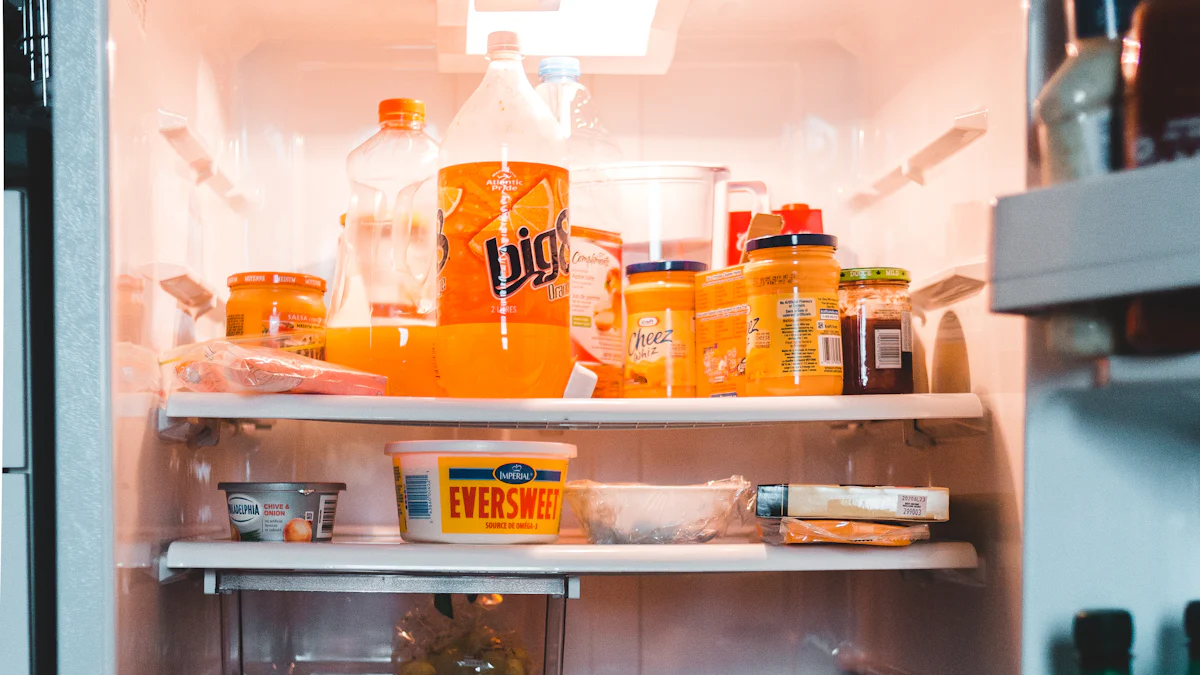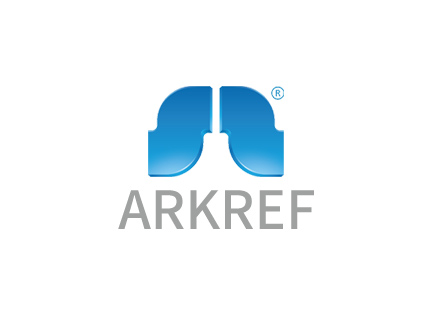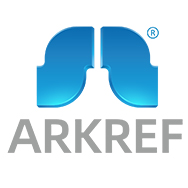Energy-Saving Strategies for Modern Spiral Freezers

Energy efficiency plays a critical role in reducing the cost of operation for spiral freezers. These systems, widely used in the food industry, consume less energy compared to other freezing methods. However, high energy consumption remains a challenge due to factors like heat leakage and inefficient airflow. Rising energy costs and stricter regulations have pushed businesses to adopt energy-saving solutions. Proper management and advanced monitoring can achieve annual energy savings of up to 50%. Additionally, optimised air distribution and advanced insulation materials help lower operating costs while reducing greenhouse gas emissions.
Understanding Energy Consumption in Spiral Freezers
How Spiral Freezers Work
Spiral freezers operate using a continuous spiral conveyor belt that moves food products through a controlled cooling environment. This design allows for the rapid freezing of large quantities of items, preserving their freshness and texture. The freezing process relies on evaporator fans to maintain low temperatures and regulate the speed of the conveyor belt. High-velocity airflow ensures uniform chilling across all surfaces of the products. These freezers are essential in the food processing industry due to their ability to freeze products efficiently while occupying minimal space. Their adaptability makes them indispensable for high-volume operations.
Common Sources of Energy Waste
Heat Leakage and Insulation Issues
Heat leakage is a significant contributor to energy consumption in spiral freezers. Poor insulation allows external heat to enter the freezing chamber, forcing the system to work harder to maintain low temperatures. Over time, worn-out seals and damaged panels exacerbate this issue. Upgrading to advanced insulation materials can mitigate heat leakage, improving energy efficiency and reducing operational costs.
Inefficient Airflow Management
Improper airflow management leads to uneven chilling and increased energy usage. Blocked or poorly designed air ducts create pressure drops, reducing the efficiency of the cooling system. Ensuring optimal airflow distribution is critical for maintaining consistent temperatures and minimising energy waste. Regular maintenance of fans and ducts can address these inefficiencies.
Energy Consumption Metrics
Key Performance Indicators for Energy Efficiency
Monitoring energy consumption in spiral freezers requires specific performance indicators. Metrics such as kilowatt-hours per tonne of frozen product and the coefficient of performance (COP) help evaluate energy efficiency. These indicators provide insights into how effectively the freezer converts electrical energy into cooling power.
Monitoring and Measuring Energy Usage
Accurate measurement of energy usage is vital for identifying inefficiencies. Advanced monitoring systems track real-time energy consumption, enabling operators to make informed adjustments. Data analysis helps pinpoint areas of improvement, ensuring the spiral freezer operates at peak efficiency. Regular audits further enhance energy savings by identifying hidden inefficiencies.
Key Energy-Saving Strategies for Spiral Freezers

Airflow Optimisation
Improving Air Circulation
Improving airflow in a spiral freezer is essential for maintaining consistent chilling and reducing energy consumption. Variable Speed Drives (VSDs) for fans can adjust airflow based on the load, ensuring efficient operation. Increasing freeze time allows for lower air velocities, which reduces energy usage while maintaining product quality. Operators in the food processing industry can also minimise underuse by improving operating procedures. Additional monitoring systems on production lines help ensure finished products reach the desired temperature, further enhancing energy efficiency. Effective defrosting processes also play a critical role in reducing energy waste.
Reducing Pressure Drops
Pressure drops in the airflow system can significantly impact energy efficiency. Advanced monitoring and control systems can manage the freezing process, leading to annual energy savings of up to 50%. Reducing discharge pressure setpoints and maximum fan speeds, especially with lighter products, optimises airflow and minimises energy waste. Improved airflow design, such as using airflow blockage and guide technology, can increase the average air velocity in the freezing zone by up to 2.7 times. This adjustment reduces freezing time by as much as 85%, offering substantial energy saving opportunities.
Equipment Upgrades
High-Efficiency Motors and Compressors
Upgrading to high-efficiency motors and compressors provides a significant boost to the energy efficiency of spiral freezers. These components consume less power while delivering the same level of performance. Modern compressors also offer better control over chilling temperatures, ensuring consistent results. The spiral freezer market increasingly favours these upgrades due to their long-term cost savings and environmental benefits.
Advanced Insulation Materials
Advanced insulation materials prevent heat leakage, a common issue in spiral quick-freezers. These materials maintain the low temperatures required for high-capacity freezing solutions, reducing the workload on the system. Improved insulation also enhances storage conditions, ensuring products remain fresh for extended periods. Businesses in the food processing industry can achieve substantial savings by investing in these upgrades.
Maintenance Practices
Regular Cleaning and Servicing
Regular cleaning prevents debris accumulation, which can lead to system failure and reduced chilling efficiency. Visual inspections help identify wear and tear on components, ensuring the system operates smoothly. Maintenance tasks such as replacing filters and oiling parts keep the spiral freezer running at optimal performance. These practices not only improve energy efficiency but also extend the lifespan of the equipment.
Identifying and Repairing Leaks
Leaks in the system can cause significant energy losses. Routine inspections help detect and repair these issues promptly. Addressing leaks ensures the freezer maintains an optimal airflow pattern, reducing energy waste. Businesses can also monitor system performance to identify abnormalities, preventing costly repairs and downtime.
Operational Adjustments
Optimising Load Distribution
Optimising load distribution in a spiral freezer significantly enhances energy efficiency. Unevenly distributed products on the conveyor belt can disrupt airflow, leading to inconsistent chilling and increased energy consumption. Operators in the food processing industry can address this by ensuring uniform product placement across the belt. This adjustment improves airflow patterns, reducing freezing times by up to 85%. Additionally, production rates and energy efficiency can increase by approximately 18–28% when load distribution is optimised.
Integrating control systems with spiral freezers further enhances efficiency. These systems automatically adjust belt speed, temperature, and airflow based on the load. By balancing production rates with energy-saving measures, businesses can achieve consistent results while reducing operational costs. This approach is particularly beneficial for high-capacity freezing solutions, where maintaining uniform airflow is critical for optimal performance.
Scheduling Freezing Cycles
Scheduling freezing cycles strategically can lead to substantial energy savings. Continuous operation of a spiral quick-freezer at full capacity is often unnecessary, especially during periods of low demand. By aligning freezing cycles with production schedules, operators can minimise energy waste. For instance, running the freezer at reduced capacity during off-peak hours conserves energy without compromising product quality.
Automating updates to freezing parameters based on the type of product being processed also improves energy efficiency. Advanced systems can optimise airflow, belt speed, and chilling temperatures in real-time, ensuring the freezer operates at peak efficiency. This level of precision not only reduces energy consumption but also enhances storage conditions, preserving product freshness for longer periods.
Effective scheduling and operational adjustments position businesses in the spiral freezer market to achieve both cost savings and sustainability goals. These measures ensure that energy efficiency remains a priority while meeting the demands of the food processing industry.
Technological Innovations in Spiral Freezers

Programmable Systems
Smart Controls for Temperature and Airflow
Programmable systems have revolutionised the operation of spiral freezers by introducing smart controls for temperature and airflow. These systems allow plant operators to manage the freezing process with precision, leading to significant energy efficiency improvements. Advanced monitoring and control systems can reduce energy consumption by 30% to 50% annually. Variable Speed Drives (VSDs) for fans optimise airflow by adjusting speeds based on the load. This ensures efficient operation and minimises energy waste. Increasing freeze time with lower air velocities further enhances energy savings while maintaining product quality. Improved airflow patterns can reduce freezing time by up to 85%, boosting production rates by approximately 18% to 28%.
Integration with IoT
The integration of Internet of Things (IoT) technology has further enhanced the capabilities of programmable systems. IoT-enabled spiral freezers provide real-time data on energy usage, airflow, and temperature. Operators can use this data to make informed decisions and optimise performance. IoT systems also enable predictive maintenance, reducing downtime and preventing costly repairs. These innovations have positioned the spiral freezer market as a leader in adopting smart technologies for high-capacity freezing solutions.
Heat Recovery Systems
Capturing and Reusing Waste Heat
Heat recovery systems capture waste heat generated during the freezing process and repurpose it for other applications. This reduces the overall energy demand of the facility. For example, waste heat can be used to preheat water or air, lowering the energy required for these processes. By reusing waste heat, businesses in the food processing industry can achieve substantial cost savings and reduce their carbon footprint.
Applications in Pre-Heating
Pre-heating applications benefit significantly from heat recovery systems. Captured heat can warm incoming air or water, reducing the workload on heating systems. This not only conserves energy but also improves the overall efficiency of the facility. Heat recovery systems are particularly valuable in high-capacity freezing solutions, where energy demands are substantial.
Renewable Energy Integration
Solar and Wind Energy
Renewable energy sources like solar and wind are increasingly being integrated into the operation of spiral freezers. Solar panels can power auxiliary systems, while wind turbines provide additional energy for freezing operations. These renewable sources reduce reliance on traditional energy grids, lowering operational costs and supporting sustainability goals.
Hybrid Systems
Hybrid systems combine renewable energy with conventional power sources to ensure a consistent energy supply. These systems are particularly effective in regions with variable weather conditions. By integrating hybrid systems, businesses in the food processing industry can achieve energy efficiency while maintaining reliable operations. This approach aligns with the growing demand for sustainable practices in the spiral freezer market.
Case Studies and Practical Applications
Successful Implementations
Example 1: Reducing Energy Costs in Food Processing
Several food processing facilities have successfully reduced energy costs by implementing advanced energy-saving strategies in their spiral freezers. These facilities optimised airflow patterns, ensuring efficient cold air distribution and minimising energy waste. Variable Speed Drives (VSDs) installed on evaporator fan motors reduced electricity consumption by 30% to 60%. Additionally, advanced monitoring systems allowed operators to manage freezing processes more effectively, achieving annual energy savings of up to 50%. The compact and vertical design of spiral freezers further contributed to energy efficiency by reducing the equipment footprint.
Example 2: Achieving Sustainability Goals
Businesses striving to meet sustainability goals have embraced energy-efficient spiral freezer technologies. These freezers integrate eco-friendly designs and natural refrigerants with lower global warming potential, aligning with international environmental standards. Their unique air circulation systems reduce heat transfer to the environment, decreasing refrigeration system loads and greenhouse gas emissions. By adopting these technologies, companies have significantly lowered their carbon footprint while maintaining high production standards. This approach has positioned the spiral freezer market as a leader in sustainable industrial practices.
Lessons Learned
Key Takeaways from Real-World Applications
Case studies highlight several key takeaways for improving energy efficiency in spiral freezers. Advanced monitoring and control systems can achieve energy savings of 30% to 50% annually. Automation in freezing processes reduces defrost cycles and enhances product quality, leading to further energy savings. Implementing VSDs for fans and optimising freeze times have proven effective in enhancing overall efficiency. These strategies demonstrate the importance of integrating technology and operational adjustments to maximise energy savings.
Overcoming Common Challenges
Implementing energy-saving strategies in spiral freezers often presents challenges. Integration with existing systems can lead to inefficiencies, while human error in setting parameters may increase energy consumption. Temporary fixes for production issues sometimes result in forgotten setpoint changes, exacerbating energy use. Incorrect temperature settings during product changeovers can cause warm products to fail quality checks. Adjustments made to address these issues often increase utility costs. Businesses must prioritise training and regular system audits to overcome these obstacles and ensure optimal performance.
Energy efficiency remains a cornerstone of operational success in the spiral freezer market. Businesses can achieve significant energy savings by adopting strategies such as installing Variable Speed Drives (VSDs), improving airflow management, and reducing defrost cycles. Technological advancements, including IoT-enabled devices and AI algorithms, have further enhanced the performance of spiral freezers. These innovations optimise energy usage while maintaining product quality.
To maximise benefits, businesses should focus on integrating modular designs, eco-friendly refrigerants, and advanced monitoring systems. These measures not only reduce energy costs but also align with sustainability goals. By prioritising these strategies, companies can secure long-term operational efficiency and environmental responsibility.
See Also
How Spiral Freezers Drive Innovation in Various Industries
Emerging Trends Shaping the Spiral Freezer Market Today
Comparative Analysis of Spiral and Tunnel IQF Freezers

